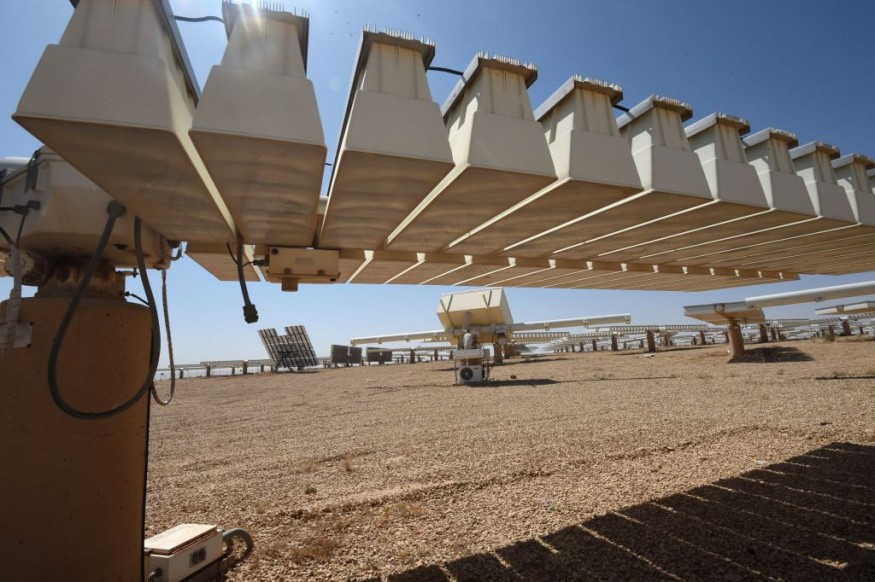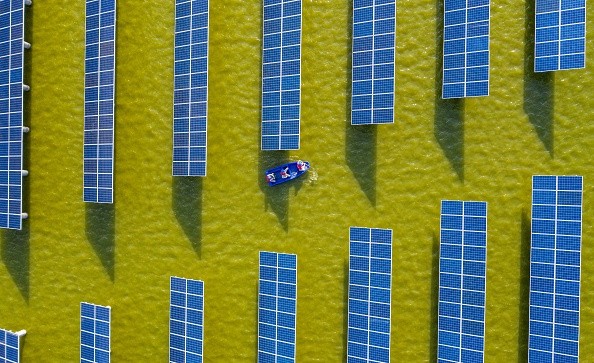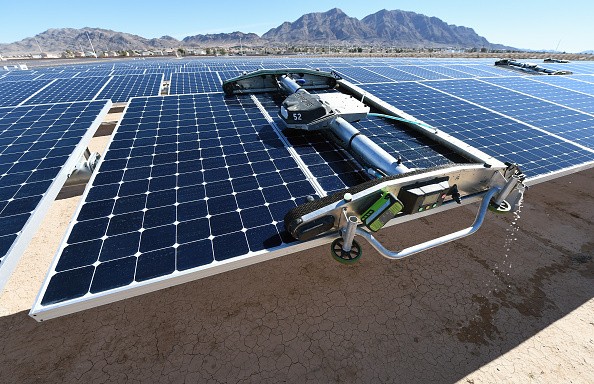Solar power is predicted to account for 10% of worldwide electricity output by 2030, with much of it concentrated in desert areas where sunshine is abundant. However, dust collection on solar panels or mirrors is already a big concern (it may diminish the performance of photovoltaic panels by up to 30% in just one month); thus, such systems require frequent cleaning.

Solar Energy
Solar energy is expected to account for 10% of global electricity production by 2030, with much of it focused on desert areas with plenty of sunshine. Dust accumulation on solar panels or mirrors, on the other hand, is already a major worry (it may reduce the effectiveness of photovoltaic panels by up to 30% in only one month); therefore, such systems require regular cleaning.
Eni, an Italian energy company, backed the study. Through the MIT Energy Initiative, S.p.A.
Waterless Cleaning

The innovative method employs electrostatic repulsion without using water or brushes to induce dust particles to separate and almost leap off the panel's surface. A simple electrode passes just over the solar panel's surface to activate the device, imparting an electrical charge to the dust particles, subsequently repelled by a charge provided to the panel. A simple electric motor and guide rails along the edge of the panel may be used to automate the mechanism. The findings were published in the journal Science Advances in a report co-authored by MIT graduate student Sreedath Panat and mechanical engineering professor Kripa Varanasi.
Despite global efforts to develop more efficient solar panels ever, "a mundane problem like dust can put a serious dent in the whole thing," according to Varanasi. Lab tests conducted by Panat and Varanasi revealed that the dropoff in energy output from the panels occurs steeply at the start of the dust accumulation process and can quickly reach a 30% reduction after just one month without cleaning. They projected that a 1% drop in power might result in a $200,000 loss in annual income for a 150-megawatt solar plant. According to the experts, a 3% to 4% decline in solar plant output would result in $3.3 billion to $5.5 billion globally.
Cost of Cleaning Solar Panels
Solar installations' water cleaning costs account for around 10% of their total operating costs. The researchers say the novel approach might lower these expenses while increasing total power output by allowing for more frequent automatic cleanings.
Varanasi claims that the solar industry's water impact is mind-boggling and will continue to grow as these systems spread worldwide. As a result, the industry must be extremely cautious and attentive about making this a long-term solution.
Other organizations have attempted to build electrostatic-based solutions; however, they have depended on an electrodynamic screen composed of interdigitated electrodes. According to Varanasi, these screens might have flaws that allow moisture to enter and lead them to break. While they would be advantageous on a planet like Mars, where moisture isn't an issue, he thinks they can be a severe problem even in dry regions on Earth.
New Tech

The new technology needs an electrode, which can be a simple metal bar, pass over the panel, creating an electric field that charges the dust particles as it gives. The particles are repelled by an opposite charge applied to a transparent conductive layer just a few nanometers thick deposited on the glass covering of the solar panel, and the researchers were able to find a voltage range sufficient to overcome gravity and adhesion forces and cause the dust to lift away by calculating the proper voltage to apply.
Furthermore, unlike some previous electrodynamic screen research, which does not operate at high or even moderate humidity, Panat's device can run forever at humidity levels as high as 95 percent.
In actuality, each solar panel might have railings on both sides and an electrode covering the entire panel at scale. A small electric motor powered by a small amount of the panel's output would drive a belt system to move the electrode from one end of the panel to the other, clearing the dust. The entire procedure might be automated or managed from afar. Instead of moving elements, small strips of conductive transparent material might be permanently positioned above the display.
Innovation
Such technologies have the potential to dramatically enhance the overall efficiency and reliability of solar installations by removing the need for trucked-in water, reducing dust accumulation that can contain corrosive chemicals, and cutting general operational expenses, according to Varanasi.
Read also: Greener Earth: The Real 'Big' Problem
For more Environmental news, don't forget to follow Nature World News!
© 2026 NatureWorldNews.com All rights reserved. Do not reproduce without permission.





